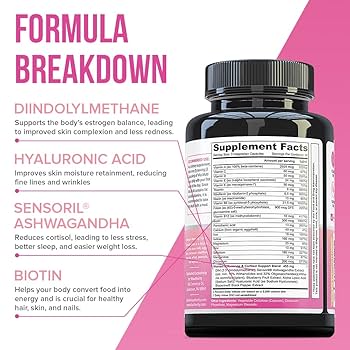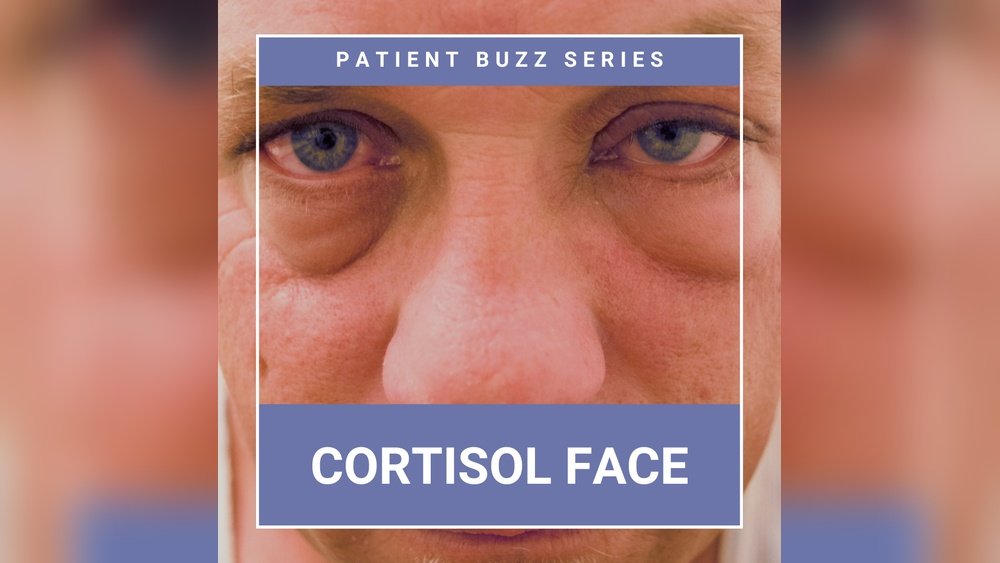Are you struggling with dull, tired-looking skin that just won’t glow no matter what you try? The secret culprit might be something you never considered: cortisol, the stress hormone.
When your cortisol levels run high, it can cause more than just stress—it can break down collagen, clog pores, and make your skin appear puffy and aged. But here’s the good news: you have the power to take control. By learning simple, effective ways to reduce cortisol, you can give your skin the boost it needs to look smoother, clearer, and healthier.
Ready to discover how lowering cortisol can transform your skin? Keep reading to unlock easy steps you can start today.

Credit: healyournervoussystem.com
Effects Of Cortisol On Skin
Cortisol, known as the stress hormone, plays a big role in skin health. High cortisol levels can damage the skin and cause several problems. Stress raises cortisol, which affects the skin’s natural balance. Understanding these effects helps in managing skin better.
Collagen Breakdown And Aging
Cortisol speeds up collagen breakdown in the skin. Collagen is a protein that keeps skin firm and elastic. Less collagen means skin loses its strength. Wrinkles and fine lines form faster. The skin looks older and less healthy.
Oil Production And Acne
High cortisol increases oil production in skin glands. Too much oil clogs pores and causes acne. Acne breakouts become more frequent and severe. The skin appears oily and uneven. Controlling cortisol helps reduce oily skin and acne.
Inflammation And Skin Issues
Cortisol raises inflammation in the skin. Inflammation causes redness, swelling, and irritation. It worsens conditions like eczema and psoriasis. The skin barrier weakens and becomes sensitive. Lowering cortisol calms inflammation and improves skin comfort.

Credit: www.youtube.com
Lifestyle Changes To Lower Cortisol
Lowering cortisol through lifestyle changes plays a key role in improving skin health. High cortisol levels can cause skin issues like inflammation and breakouts. Simple daily habits help balance cortisol and support glowing skin. These lifestyle tweaks enhance overall well-being and skin appearance.
Improving Sleep Quality
Sleep helps regulate cortisol and repair skin cells. Aim for 7 to 9 hours of restful sleep nightly. Create a calm bedtime routine to fall asleep faster. Avoid screens and caffeine before bed. A dark, quiet room improves sleep quality. Better sleep means lower cortisol and healthier skin.
Regular Physical Activity
Exercise reduces cortisol and boosts mood. Choose activities you enjoy like walking, swimming, or yoga. Aim for 30 minutes most days of the week. Physical activity also improves blood flow, nourishing skin cells. Keep workouts moderate to avoid raising cortisol too much. Regular exercise helps maintain balanced cortisol levels and clearer skin.
Stress-reducing Hobbies
Hobbies lower stress and calm the mind. Try reading, gardening, painting, or listening to music. These activities shift focus away from stressors. Mindful hobbies reduce cortisol spikes and promote relaxation. Make time daily for hobbies that bring joy. Lower stress means less cortisol damage and improved skin health.
Diet And Nutrition Tips
Diet plays a key role in managing cortisol levels and improving skin health. Choosing the right foods can help balance hormones and reduce stress. Nutrition supports the skin’s natural ability to repair and glow.
Simple changes in your diet can lower cortisol and protect your skin from damage. Focus on fresh, nutrient-rich foods and avoid processed items. Eating well fuels your body and calms stress responses.
Whole-food, Plant-based Choices
Eating whole, plant-based foods helps reduce cortisol naturally. Vegetables, fruits, nuts, and seeds provide antioxidants that fight skin inflammation. Whole grains supply steady energy without spikes in stress hormones.
These foods also contain fiber, which supports gut health. A healthy gut helps regulate cortisol production. Avoid refined sugars and processed snacks that trigger cortisol release.
Reducing Caffeine Intake
Caffeine can raise cortisol levels, especially in large amounts. Cutting back on coffee, energy drinks, and soda helps keep cortisol stable. Try herbal teas or water instead to stay hydrated.
Lower caffeine means fewer stress hormone surges. This change supports better sleep and reduces skin problems like redness and puffiness. Small steps in cutting caffeine improve skin over time.
Supplements That Help
Certain supplements can support healthy cortisol levels and skin health. Adaptogens like ashwagandha and rhodiola help the body handle stress better. Omega-3 fatty acids reduce inflammation and protect skin cells.
Magnesium also calms the nervous system and lowers cortisol. Always choose high-quality supplements and consult a healthcare provider before starting them. Supplements work best alongside a balanced diet.

Credit: www.amazon.com
Relaxation Techniques
Relaxation techniques play a key role in lowering cortisol levels. Lower cortisol helps reduce skin problems like acne and wrinkles. These techniques calm your mind and body. They ease tension and promote healthy skin. Practicing relaxation daily supports a balanced stress response and improves skin appearance.
Breathing Exercises
Simple breathing exercises can quickly reduce cortisol. Deep, slow breaths signal your body to relax. Try inhaling through your nose for four seconds. Hold your breath for four seconds. Exhale slowly through your mouth for six seconds. Repeat this cycle five to ten times. This practice lowers stress hormones and refreshes your skin.
Meditation And Yoga
Meditation and yoga improve mental calmness and physical flexibility. Meditation quiets your mind and lowers stress hormones. Yoga combines gentle movement with focused breathing. Both help balance cortisol levels. Regular practice improves blood flow to the skin. This adds a natural glow and reduces inflammation.
Journaling For Emotional Release
Writing down your thoughts helps release built-up stress. Journaling clarifies emotions and reduces anxiety. This can lower cortisol and improve skin health. Spend a few minutes each day writing about your feelings. Focus on positive moments or things that worry you. This habit supports emotional balance and healthier skin over time.
Recognizing And Managing Cortisol Face
Recognizing and managing cortisol face is key to improving skin health. Cortisol, the stress hormone, affects the skin’s appearance and texture. High cortisol levels can cause visible changes in your face. Understanding these signs helps you take action early. Managing cortisol through lifestyle and medical care can reduce its impact on your skin.
Signs Of High Cortisol In Skin
High cortisol often causes puffiness and swelling in the face. This condition is sometimes called “moon face” or “cortisol face.” Skin may look rounder and feel tight. You might notice more acne or redness. Fine lines and wrinkles can appear faster. Dryness and dullness are common too. These signs show your skin is under stress from cortisol.
Medical Conditions And Treatments
Certain health problems raise cortisol levels, like Cushing’s syndrome. Long-term use of corticosteroid medications also causes cortisol face. Doctors can diagnose these conditions with tests. Treatment may include medication changes or hormone therapy. Always seek medical advice for proper diagnosis. Managing underlying conditions helps lower cortisol and improve skin.
Boosting Skin Confidence
Reducing cortisol benefits your skin and mood. A healthy diet rich in fruits and vegetables supports skin repair. Regular exercise helps balance hormone levels and reduce stress. Good sleep is essential for skin recovery and cortisol control. Simple breathing exercises calm your mind and lower cortisol quickly. Small daily steps can restore your skin’s glow and boost confidence.
Frequently Asked Questions
How Can I Lower My Cortisol Levels On My Face?
Lower facial cortisol by getting enough sleep, exercising regularly, eating a nutritious diet, practicing stress-reducing techniques, and enjoying relaxing hobbies.
What Does A High Cortisol Face Look Like?
A high cortisol face appears round, swollen, and puffy, often called “moon face. ” It may cause skin sagging and wrinkles.
What Is The Quickest Way To Lower Cortisol Levels?
The quickest way to lower cortisol levels includes deep breathing, regular exercise, adequate sleep, and reducing caffeine intake.
Does Lowering Cortisol Make Skin Smoother?
Lowering cortisol helps preserve collagen, reducing wrinkles and sagging. This promotes smoother, firmer, and healthier-looking skin naturally.
What Causes High Cortisol Levels To Affect Skin Health?
High cortisol increases skin oil and breaks down collagen, leading to wrinkles and breakouts.
How Does Stress Increase Cortisol And Harm Skin?
Stress triggers cortisol release, causing inflammation and skin damage over time.
Conclusion
Reducing cortisol helps your skin stay healthy and clear. Simple habits like good sleep, balanced meals, and exercise lower stress. Breathing exercises and hobbies calm your mind and body. These steps protect collagen, keeping skin firm and smooth. Small changes make a big difference over time.
Take care of your body and skin daily. Healthy skin reflects a balanced and relaxed lifestyle. Keep stress low for a brighter, fresher face.
 Skip to content
Skip to content 